Choosing the right flooring is just as much about finding a style and material that fits your design preferences as it is about finding something that meets your home’s functional needs. But with so many options, finding the best flooring for your home can be a huge challenge. To better understand your options, it can be helpful to categorize the different types of flooring by good, better, and best.
At Lamont Bros. Design & Construction, we work with homeowners in the Portland Metro Area to transform their homes. One major part of almost every home renovation project is the flooring. While your floors probably aren’t something you think about often, they can have a tremendous impact on the style and functionality of your home.
In this article, we’ll help you understand the different flooring options available by breaking them down into good, better, and best categories. After reading, you’ll know the differences between these flooring options and understand which ones might work best for your home. The specific types of flooring we will discuss include.
Good: Sheet Vinyl
Sheet vinyl flooring is a cost-effective, functional option that is well-suited for some areas of the home. Known for its practicality, sheet vinyl offers a water-resistant, durable surface. It’s an ideal product for spaces like mudrooms, bathrooms, and basements.
This type of flooring is particularly valued for its ability to cover large areas continuously, often eliminating the need for seams depending on the room’s dimensions. The versatility and ease of maintenance of sheet vinyl make it a go-to choice for homeowners seeking a budget-friendly solution.
Advantages of Sheet Vinyl:
Cost-Effectiveness: Sheet vinyl is one of the most affordable flooring options available. It allows homeowners to achieve a finished look without a significant investment.
Seamless Installation: Depending on the room size, sheet vinyl can be installed as one sheet without seams. This can enhance the space’s water resistance and simplify cleaning.
Water Resistance: Sheet vinyl’s ability to repel water makes it an excellent choice for areas prone to moisture. Secondary entrances, mud rooms, and utility spaces are great candidates for sheet vinyl flooring.
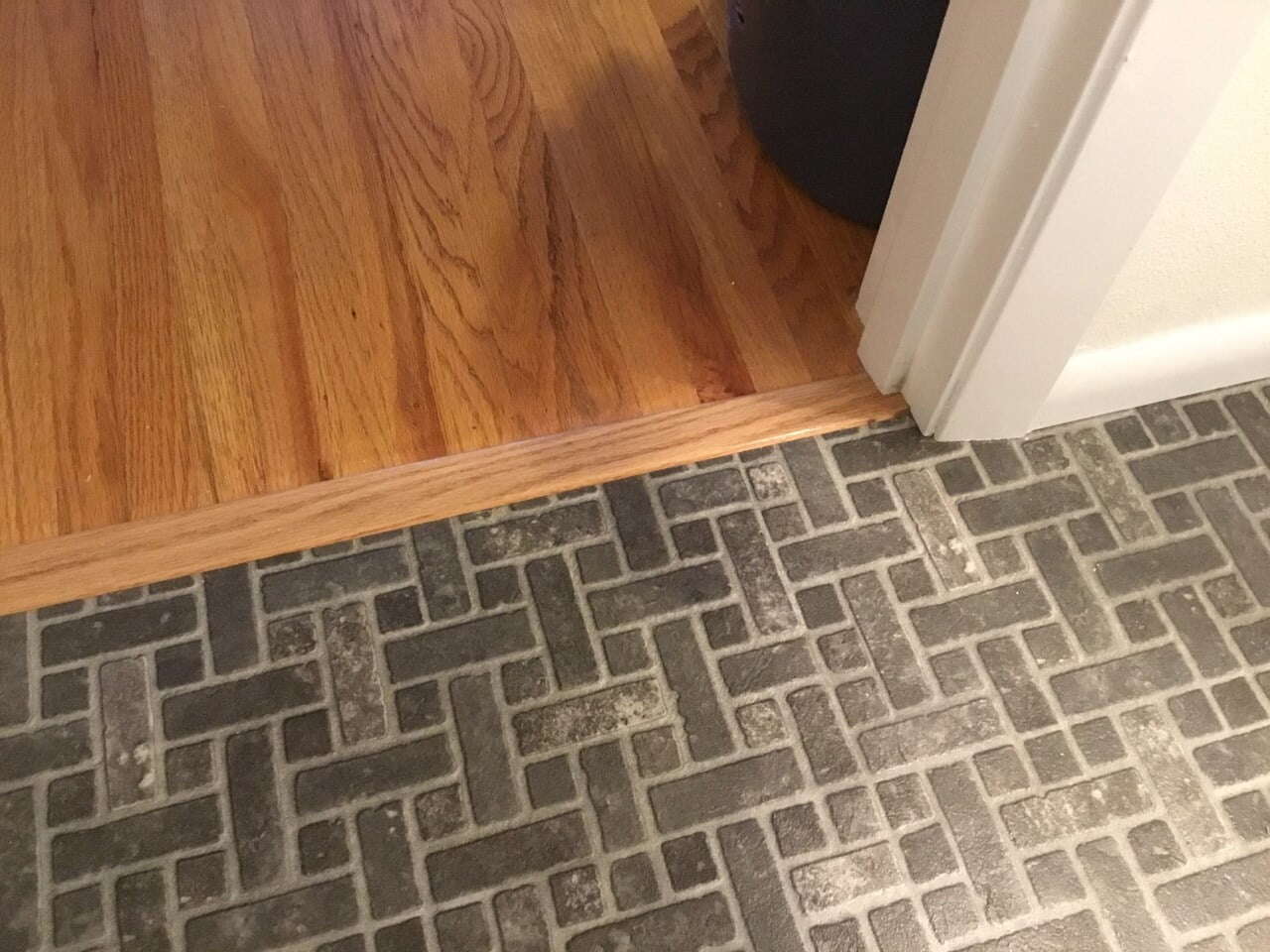
Challenges of Sheet Vinyl:
Aesthetic Limitations: While modern advancements have improved the current design options available in sheet vinyl, it generally lacks the depth and richness of more expensive flooring. The visuals, although improved, do not fully replicate the natural materials they aim to mimic.
Perception of Quality: Despite its practical benefits, sheet vinyl may not add as much value to a home as other flooring types due to its lower cost and synthetic nature. Some homeowners may prefer to invest in higher-end options for areas of greater visibility or significance.
Better: Vinyl, Laminate, and Marmoleum
Elevating from the practicality of entry-level flooring options, the “Better” category introduces a blend of aesthetic appeal and enhanced functionality. This tier includes a variety of flooring choices that begin to mimic the natural beauty of wood and stone. It also offers improved durability and design versatility without a steep price increase.
Vinyl, Laminate, and Marmoleum stand out as options in the “Better” category for homeowners looking to balance cost with quality. Each material brings its own set of benefits, catering to different needs and design preferences while providing a significant upgrade in terms of appearance and performance.
Vinyl Flooring Options: LVP and LVT
Luxury Vinyl Plank (LVP) and Luxury Vinyl Tile (LVT) have emerged as popular choices among homeowners. These options offer an aesthetic that mimics hardwood or stone. It also features the resilience and maintenance ease of vinyl, making it ideal for high-traffic areas, kitchens, and bathrooms.
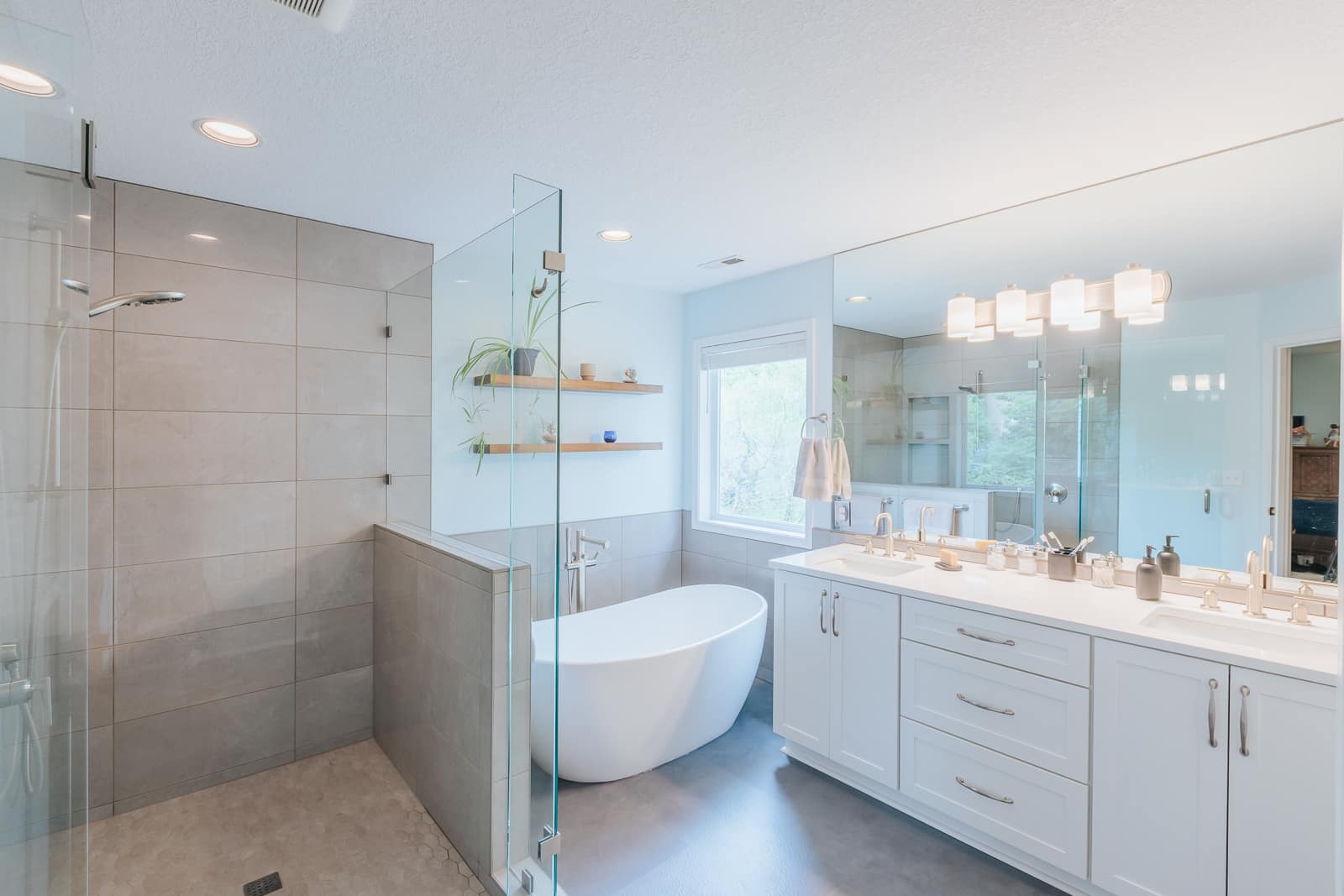
Advantages of Vinyl Flooring:
Realistic Designs: Both LVP and LVT come in a wide range of styles and patterns that realistically mimic the color and texture of natural wood and stone. This way, homeowners can enjoy the elegance of natural materials at a fraction of the cost.
Durability: Engineered for high durability, these vinyl options resist scratches, dents, and stains, making them perfect for households with pets and children.
Water Resistance: Unlike hardwood or traditional laminate, LVP and LVT offer superior water resistance, making them suitable for moist environments like bathrooms and kitchens.
Challenges of LVP and LVT:
Perception of Authenticity: While LVP and LVT can closely replicate the look of wood or stone, some homeowners may prefer the authenticity of natural materials despite the higher cost and maintenance requirements.
Sensitivity to Temperature: One of the most common issues of vinyl flooring is its susceptibility to expansion and contraction due to temperature changes. This is an especially tricky issue in the Pacific Northwest, where seasonal temperatures cause vinyl floors to separate or buckle.
Subfloor Preparation: Proper installation of LVP and LVT often requires a smooth, flawless subfloor to avoid imperfections. This may necessitate additional prep work and costs.
Laminate Flooring
Laminate flooring is a synthetic flooring product that simulates the appearance of hardwood. It is comprised of a wood composite core with a photographic layer under a clear protective layer on the surface.
This option has gained popularity due to its affordability, ease of installation, and substantial durability. It’s particularly appealing for living areas, bedrooms, and spaces where the look of wood is desired without the cost and maintenance.
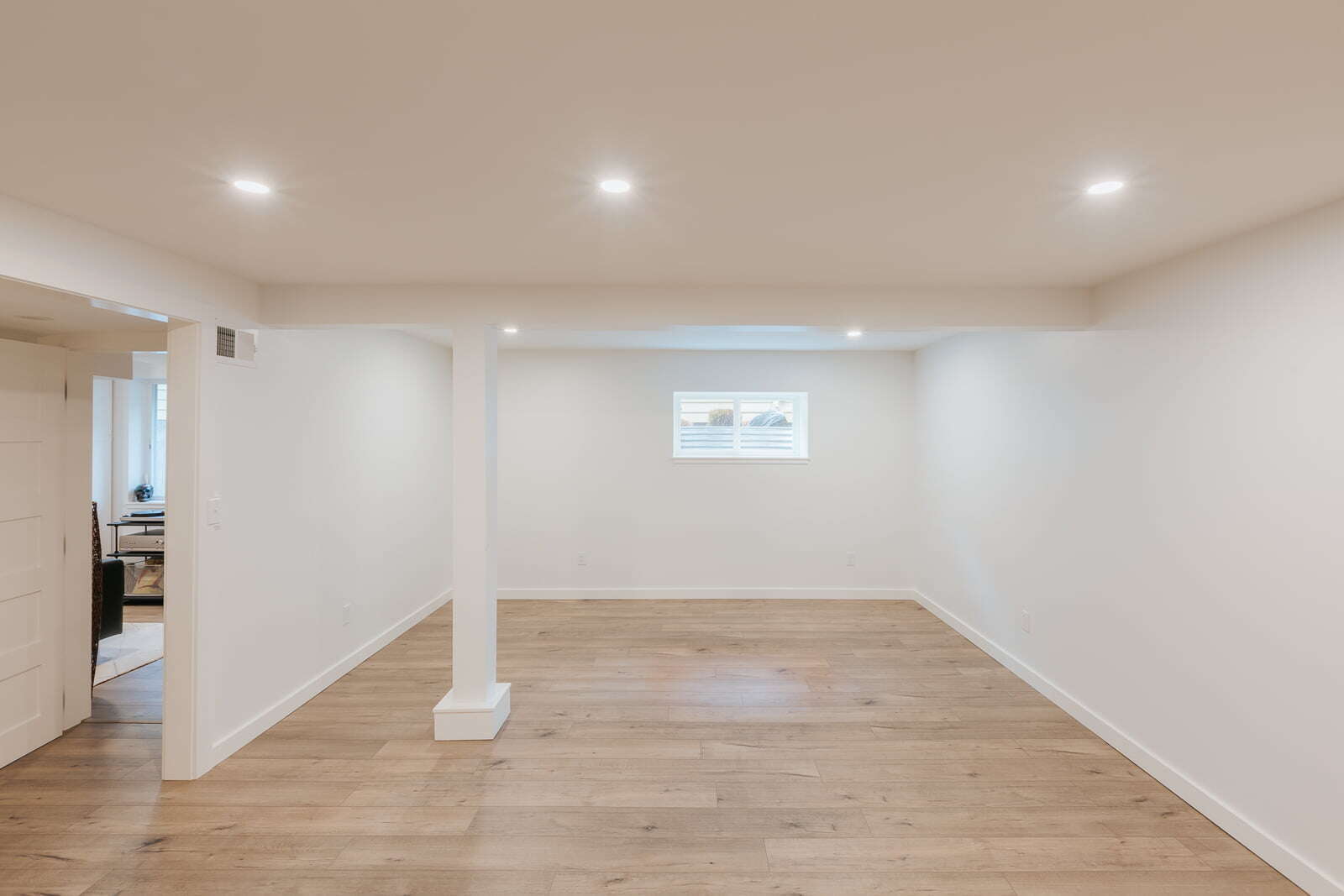
Advantages of Laminate Flooring:
Cost-Efficiency: Laminate is significantly less expensive than traditional hardwood, offering a cost-effective solution for homeowners looking to achieve a warm, inviting look in their spaces.
Ease of Installation: Thanks to modern click-and-lock installation systems, laminate flooring can be easily installed by DIY enthusiasts, saving on professional installation costs.
Durability: Constructed with a tough wear layer, laminate flooring is resistant to scratches, dents, and stains, making it an ideal choice for high-traffic areas and homes with pets and children. Additionally, modern waterproofing technology has greatly improved some laminate floor product’s resistance to water damage.
Challenges of Laminate Flooring:
Water Sensitivity: Although some newer laminate options have water-resistant features, traditional laminate flooring can be susceptible to damage from excessive moisture. This can place some limitations on its use in bathrooms or basements without additional precautions.
Repair Limitations: Unlike wood, which can be sanded and refinished, damaged laminate boards are difficult to repair and often require the replacement of the entire board.
Marmoleum Flooring
Marmoleum flooring is a natural, eco-friendly flooring option made from materials linseed oil, wood flour, and jute. This sustainable choice is known for its durability, versatility, and vibrant color options.
Marmoleum offers a distinct, modern aesthetic that can complement various interior styles, from traditional to contemporary. It’s an excellent choice for homeowners interested in green building materials and those with allergies or sensitivities, as it does not emit volatile organic compounds (VOCs).
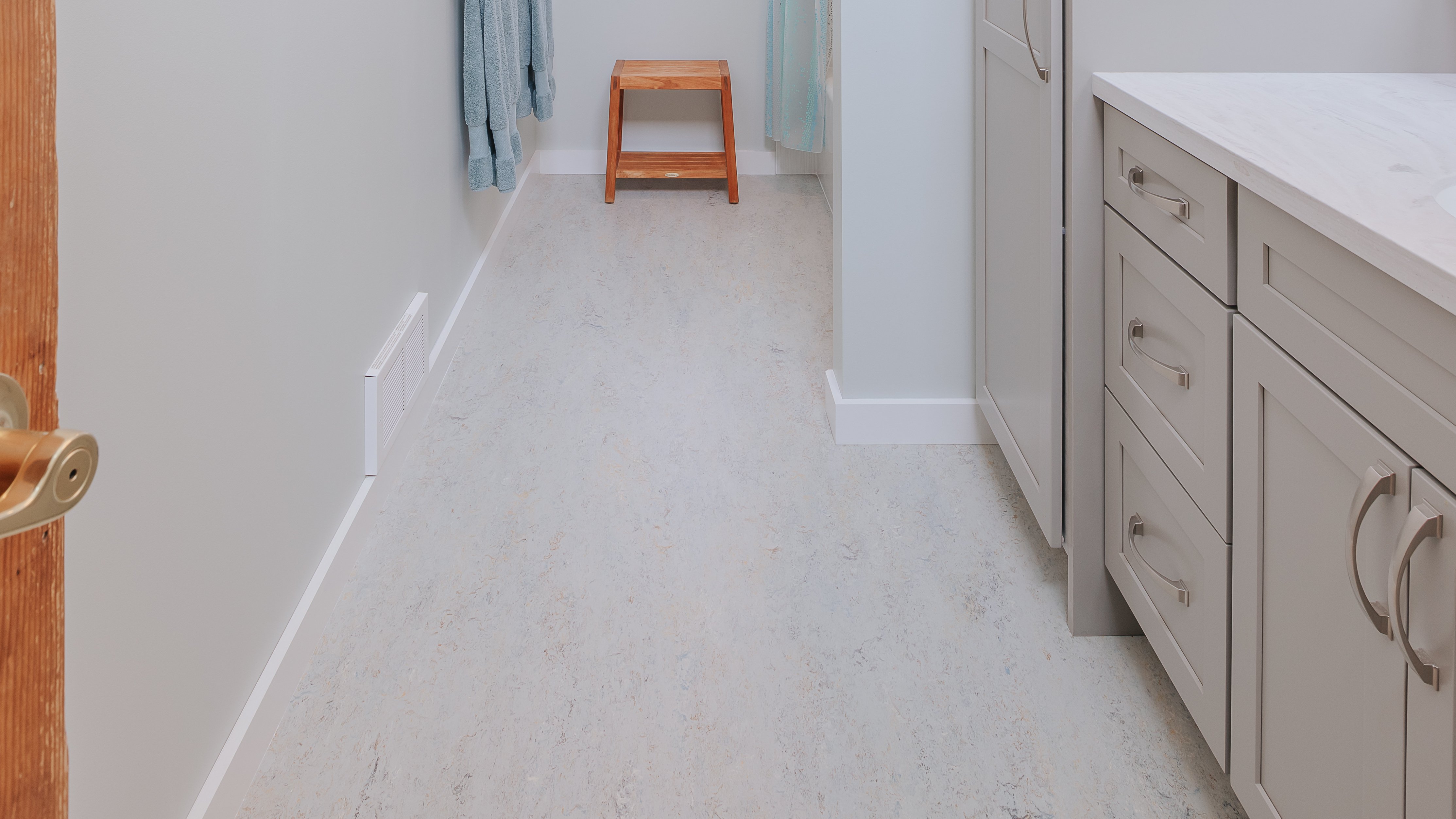
Advantages of Marmoleum Flooring:
Eco-Friendly: Composed of natural, renewable materials, Marmoleum is fully biodegradable and contributes to a healthier indoor environment.
Durability: Marmoleum floors are incredibly durable and resistant to wear, making them suitable for high-traffic areas and commercial spaces.
Antibacterial Properties: Naturally resistant to bacteria and dust mites, Marmoleum is an ideal flooring option for allergy sufferers and can help maintain a cleaner home environment.
Challenges of Marmoleum Flooring:
Installation Complexity: While Marmoleum sheets or tiles can offer a seamless look, They require professional installation to ensure the best results, which may increase overall project costs.
Maintenance Requirements: Marmoleum flooring requires regular maintenance, including sealing after installation and periodic refinishing, to preserve its appearance and durability.
Limited Moisture Resistance: Though Marmoleum handles daily wear and tear well, it is susceptible to moisture and may not be the best choice for bathrooms or basements without adequate waterproofing measures.
Best Flooring Options: Hardwood and Tile
When it comes to top-quality choices, the “Best” category features unparalleled beauty, longevity, and value. Hardwood and tile flooring fall into this category of high-end options.
These materials are valued for their timeless appeal, natural beauty, and their sense of warmth and sophistication. Whether it’s the classic elegance of hardwood or the refined durability of tile, these flooring options elevate any renovation project from ordinary to extraordinary.

Hardwood Flooring
Hardwood flooring is a favorite among homeowners for its natural beauty, warmth, and durability. Available in solid and engineered forms, hardwood floors offer a wide range of customizable wood types, finishes, and styles. These products feature a high degree of customization to suit any interior design.
Advantages of Hardwood Flooring:
Timeless Aesthetic: Hardwood floors bring a natural elegance and warmth to any room, complementing both modern and traditional interiors.
Durability and Longevity: With proper care, hardwood floors can last for decades. Solid hardwood can also be refinished multiple times to restore its appearance.
Value Addition: Hardwood floors are a sought-after feature in real estate, often increasing the market value of a home.
Challenges of Hardwood Flooring:
Cost: Hardwood is among the more expensive flooring options, both in terms of materials and installation.
Maintenance: While durable, hardwood floors can scratch and dent and require maintenance to keep them looking their best. They also need protection from moisture and water damage.
Sensitivity to Changes in Humidity: Wood expands and contracts with changes in humidity, which can lead to warping or gaps if not properly managed.
Tile Flooring
Tile flooring, which includes ceramic, porcelain, and natural stone options, offers versatility, durability, and a wide range of aesthetic possibilities.
It is favored for areas of the home that require easy maintenance and moisture resistance, such as kitchens, bathrooms, and entryways. With an array of colors, patterns, and textures, tile flooring can seamlessly integrate into classic or contemporary designs.
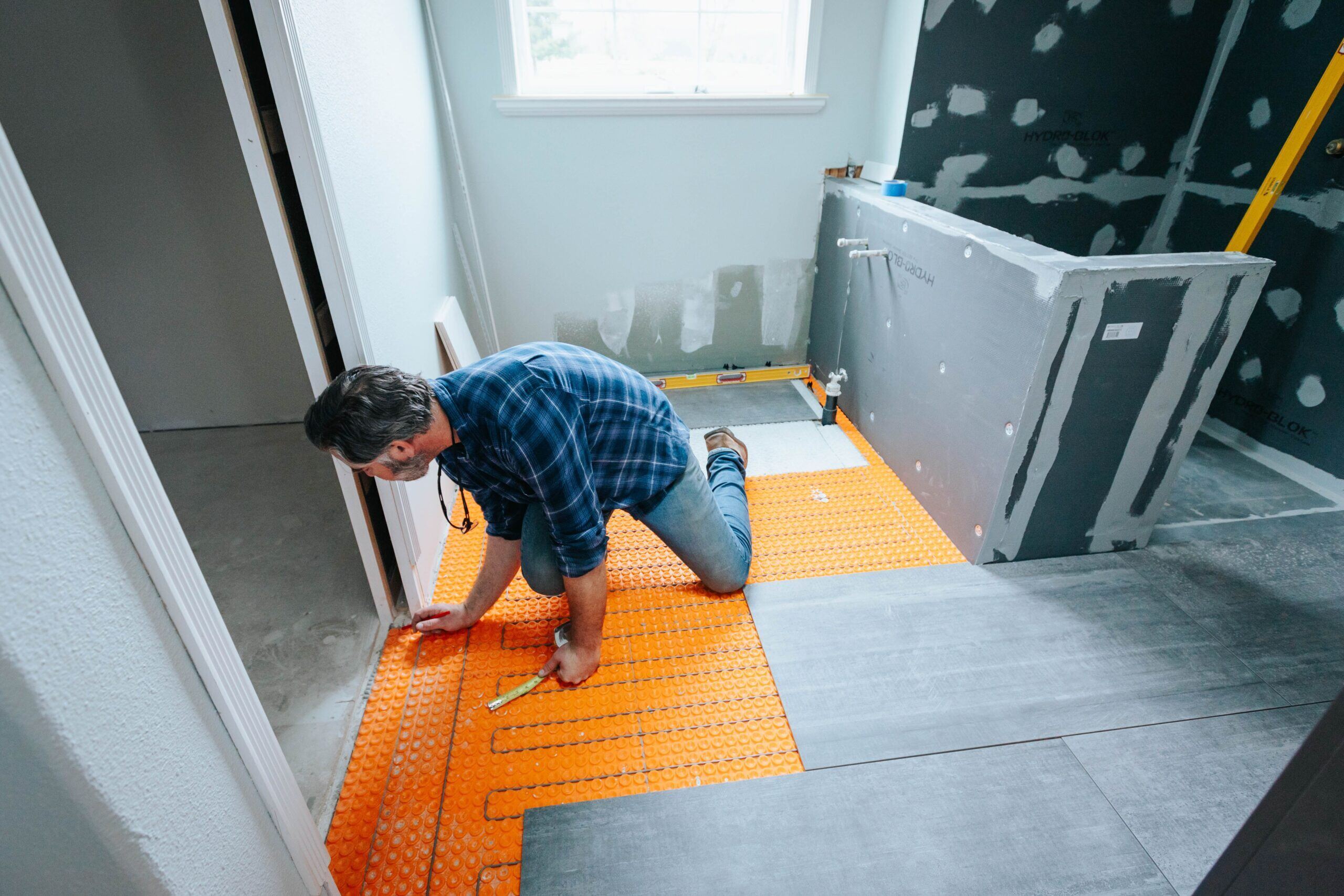
Advantages of Tile Flooring:
Versatility in Design: The vast selection of tile in terms of material, color, size, and pattern allows for endless creative possibilities, enabling homeowners to tailor their spaces to exact specifications.
Durability: Tile floors are hard-wearing and resistant to stains, scratches, and moisture, making them suitable for high-traffic areas and wet environments. Some tile floors can last for over a century if installed correctly.
Low Maintenance: Tile floors are easy to clean and maintain, requiring only regular sweeping and mopping to keep them looking new.
Challenges of Tile Flooring:
Installation Complexity: Tile flooring requires professional installation to ensure proper fit and finish, especially for complex patterns or natural stone tiles.
Hardness and Comfort: Tile can be hard underfoot, which may be uncomfortable in areas where you spend a lot of time standing. The use of rugs or mats can help alleviate this issue.
Coldness: Without radiant floor heating, tile can be cold to the touch, which might be unwelcome in cooler climates or during winter months.
Looking For Design Inspiration for Your Home?
Now that you understand more about the different flooring options available, do you know which ones might be the right fit for your next home improvement project? As you continue to learn about home renovation, continue your research by checking out our Work Portfolio. There, you can gather inspiration for your remodel by seeing how other Portland homeowners have transformed their own homes.
Considering a renovation, but not yet working with a designer? If you would like professional guidance as you navigate the process of remodeling your home, click the button below to schedule a free design consultation.



